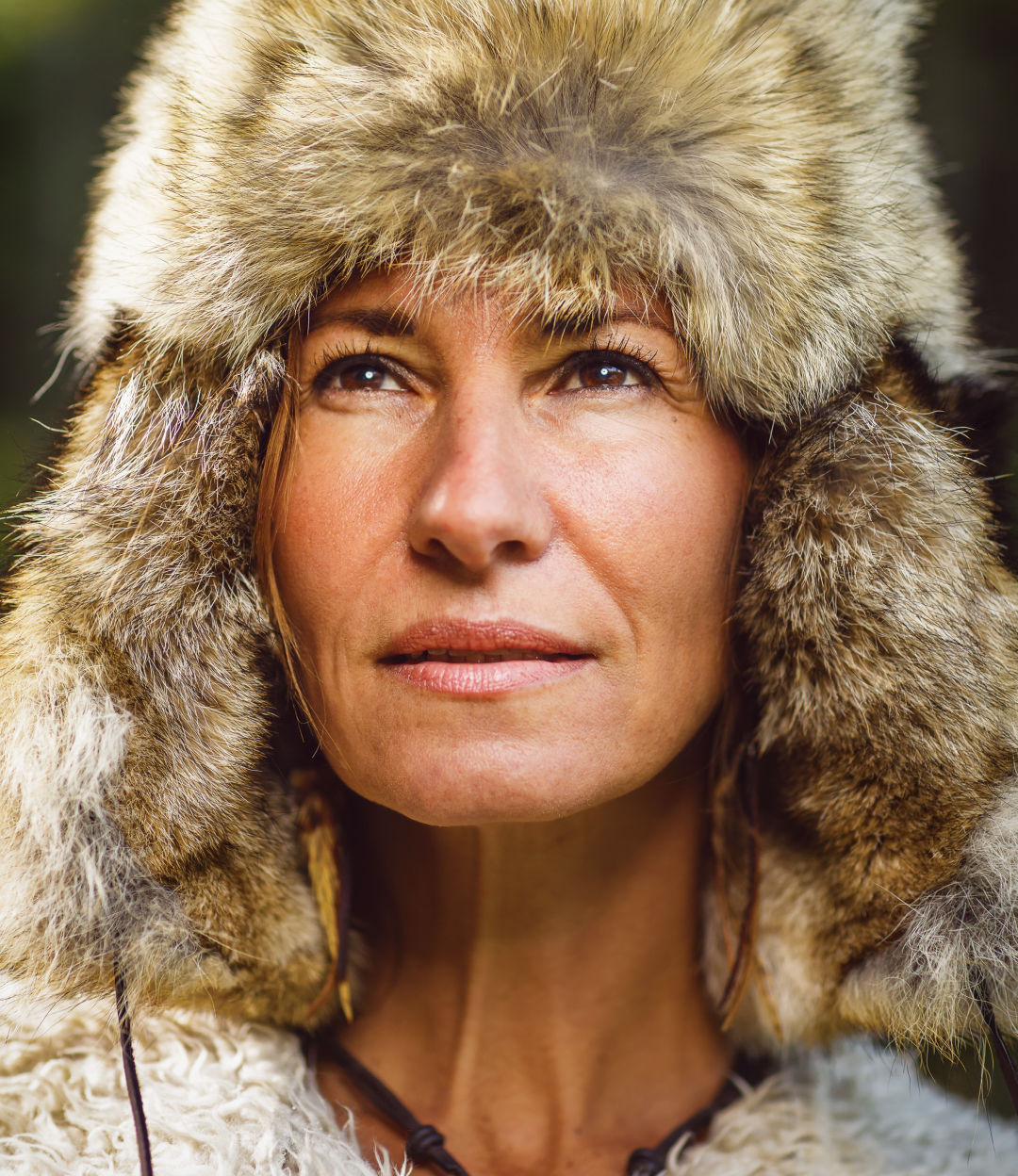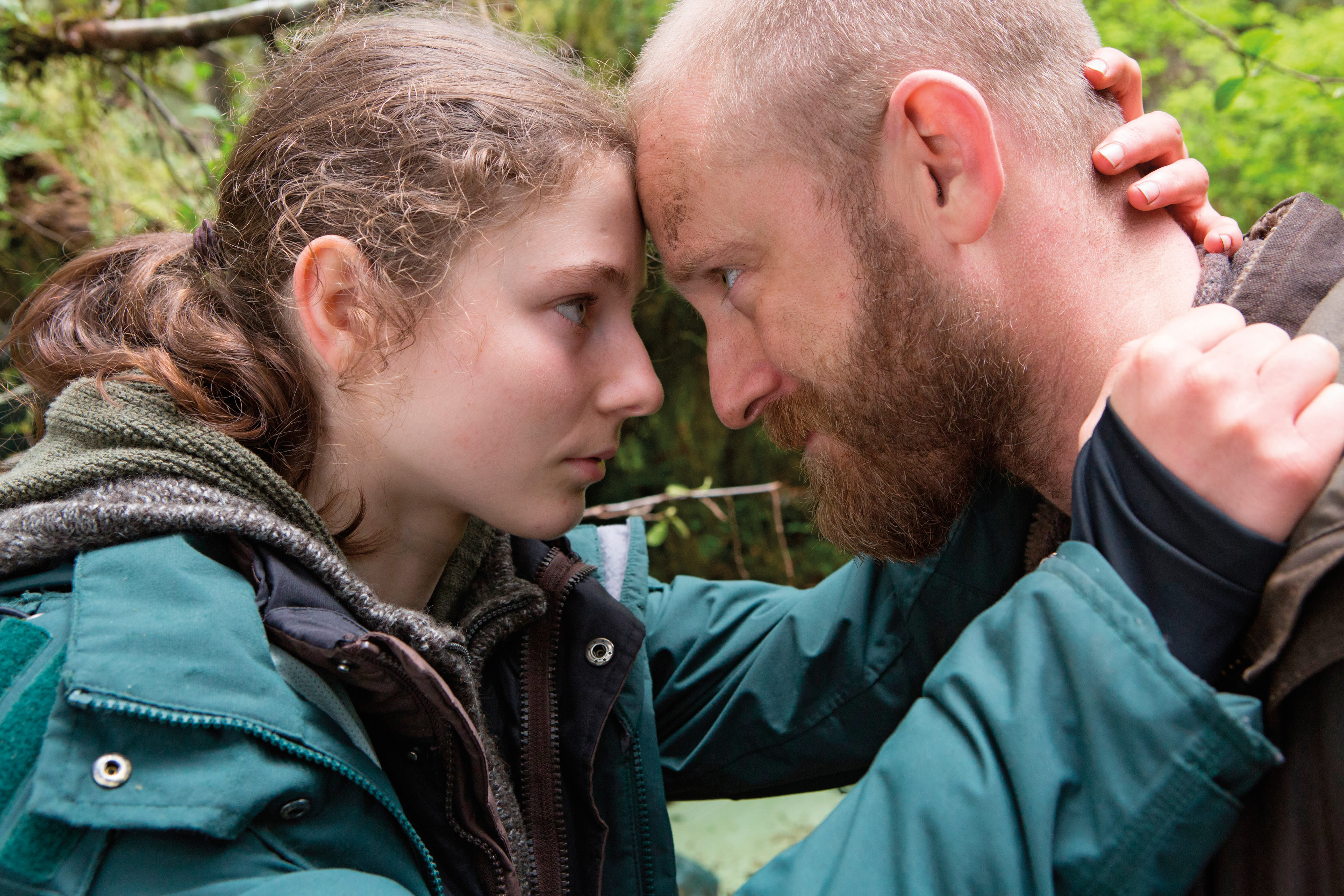This Banana Slug–Eating Survivalist Will School You on Wilderness Skills

Image: NASHCO PHOTO
Nicole Apelian can build a waterproof shelter from forest debris. She can start a fire in the dumping rain. And, most impressively, she can turn banana slugs into a toasty meal. Apelian is a survival skills expert, with chops she proved while living off the land by herself for 57 days on Vancouver Island as a contestant for the History Channel show Alone. But the 49-year-old former Portlander, who now lives near Willapa Bay in rural Washington, doesn’t just eat gastropods and jury-rig fishing rods for the benefit of the camera. In her daily life, as a teacher and mother of two sons, she harvests mussels, mixes herbal medicines, and makes buckskin clothing (tanning the hide with the deer’s own brain). When film director Debra Granik was making Leave No Trace, this year’s indie release about the real-life father and daughter who made their home in Portland’s Forest Park, she tapped Apelian to provide the lead actors with a crash course in wilderness skills. And Apelian does it all while managing multiple sclerosis.
I was the kid who was always outside. I had a bug collection and a shell collection and a bird’s nest collection. My family would spend every summer at a canoe-access-only campground in Maine, with no running water and no electricity. We didn’t even have a TV at home. Well, we had a black-and-white one, but my parents kept it in the closet and we weren’t allowed to watch it.
I joined the Peace Corps in 1995 and worked as a game warden for Botswana’s wildlife department. Then I joined a lion research project in the country’s Okavango Delta. Most days, we were finding lions, staying with them for long periods of time, figuring out their habits, their prey selection, seeing if they were on a kill, marking what they’d eaten. Sometimes we’d sit on a den for days, just seeing how often the female would come back and feed her cubs.
Elephants and buffalo and lions came through camp almost every day in Botswana. You feel like you’re living as part of the food web, as part of the ecosystem. It was very simple—no electricity, no running water for a very long time. We finally got running water, but the elephants would dig it up. Every day of the dry season, we’d have to go back and fix it.
I started getting symptoms of MS when I was 29. I went downhill fast. I often used a wheelchair at night, and some days I was completely bedridden. I went on all these Western medications and kept getting sicker and sicker. After a couple of years I started seeing an ayurvedic doctor and changed my diet. I started learning more about medicinal herbs, about mindfulness and gratitude, and really shifted my entire lifestyle in a way that I got healthy again.
Alone was a chance to put my skills to the test. Could I really survive off the land? The bush is a very humbling place. My friend Jose, who was on my season, said it so beautifully: “You may swagger into the bush, but you will stagger out of it.” I started forming relationships with the wildlife, some of the trees. I had a mom and cubs and also a large male black bear at my site. I got to know them well enough that the male and I would forage on the beach together, probably 30 yards apart, going after the same food. We would give a little head nod.
I ate a lot of banana slugs. One day I actually craved them. They’re pretty good protein. The key is to cook them over the fire, like you would a hot dog. You put them on a stick and roast them over the fire until all of the slime falls off. They’re quite delicious. They’re hermaphrodites, and all their reproductive parts are in the front part of their head, and so that whole front area is especially good. The hardest thing to get down were the sea lice. You know pill bugs? They’re the ocean version of that. They’re like an inch in size and look like little scurrying cockroaches. There’s a lot of calcium in them because you can eat the shell. You munch it down. They’re under rocks, and I caught them by hand and would fry them up in my pan. I eat insects often, but I did not love the sea lice. It’s the crunch, it’s the cockroach look—it’s not a great package.
I'd spent some time with the Kalahari San Bushmen in the ’90s. I found this amazing community that’s still fairly intact. I started my safari company in 2006, and once a year I bring people back to visit. I’ve learned a lot from them. They don’t dwell in the past. They also don’t think very far into the future. Jon, the person I co-lead this trip with, had a pocket watch. He glanced at it and put it away. One of the old healers said, “Oh, is that a timepiece? We don’t like those. Every time one of you looks at one, the next thing you do is rude.” What a beautiful thing!




